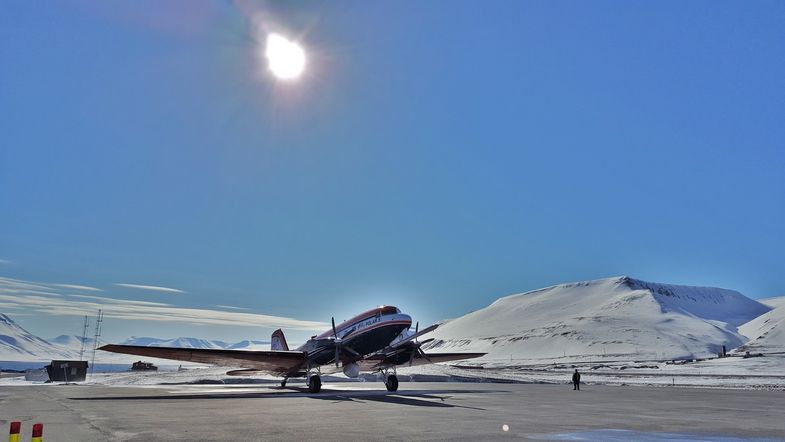“From mid-March to mid-April and then again in August, we will be deploying the research aircraft in cooperation with the Alfred Wegener Institute and other partners within our Arctic Amplification Collaborative Research Centre,” explained Wendisch. “We will take off with the planes from Svalbard and then, after stopping to refuel on Greenland, fly along the air masses moving towards the research vessel. This will give the local measurements taken on the Polarstern a regional connection, so to speak.”
The scientists hope to use a landing strip on the ice very close to the Polarstern. The 900-metre-long runway has already been prepared with the help of snow groomers. It is also designed to deliver supplies and people to the region by Russian transport planes. “In addition, our junior professor Heike Kalesse and one of my doctoral students as well as colleagues from the Leibniz Institute for Tropospheric Research will spend several months aboard the Polarstern. Their main task will be to conduct measurements with a tethered balloon,” said Manfred Wendisch.
This past week there were not one, but two new records in the history of polar research, as the University of Cambridge’s Scott Polar Research Institute has reported: on 24 February Polarstern’s drift took her to 88°36’ North, just 156 kilometres from the North Pole. Never before had a ship ventured so far north during the Arctic winter. And two days later, the Russian icebreaker Kapitan Dranitsyn, shortly before her rendezvous with Polarstern at 88°28’ North, reached the northernmost position on her mission, marking the first time a ship had made it so far north under her own power, so early in the year.
“These records represent milestones in the MOSAiC expedition. They demonstrate the success of the logistical concept, and provide the basis for the unprecedented scientific data that is being gathered during the expedition,” said Professor Markus Rex from the Alfred Wegener Institute, Helmholtz Centre for Polar and Marine Research (AWI) in Potsdam, leader of the MOSAiC expedition.
The exchange of staff and equipment is taking place on foot, with snowmobiles and with snowcats hauling heavily laden sledges. On board Polarstern and in the Ice Camp, the new expedition members are being instructed on various tasks by their predecessors. More detailed information and a summary of the second leg of the expedition are available in the press release issued yesterday by the Alfred Wegener Institute.
Background information on MOSAiC:
On the MOSAiC Expedition, experts from 20 nations will study the Arctic for an entire year. For this purpose, from autumn 2019 to autumn 2020 the German icebreaker Polarstern will drift across the Arctic Ocean, trapped in the sea ice. MOSAiC is being coordinated by the Alfred Wegener Institute, Helmholtz Centre for Polar and Marine Research (AWI). In order for the unprecedented project to be a success and produce as much valuable data as possible, over 80 scientific institutes are working together in a research consortium. The expedition’s total budget is over 140 million euros.
For the latest news straight from the Arctic, check the MOSAiC channels on Twitter (@MOSAiCArctic) and Instagram (@mosaic_expedition) using the hashtags #MOSAiCexpedition, #Arctic and #icedrift.
































































